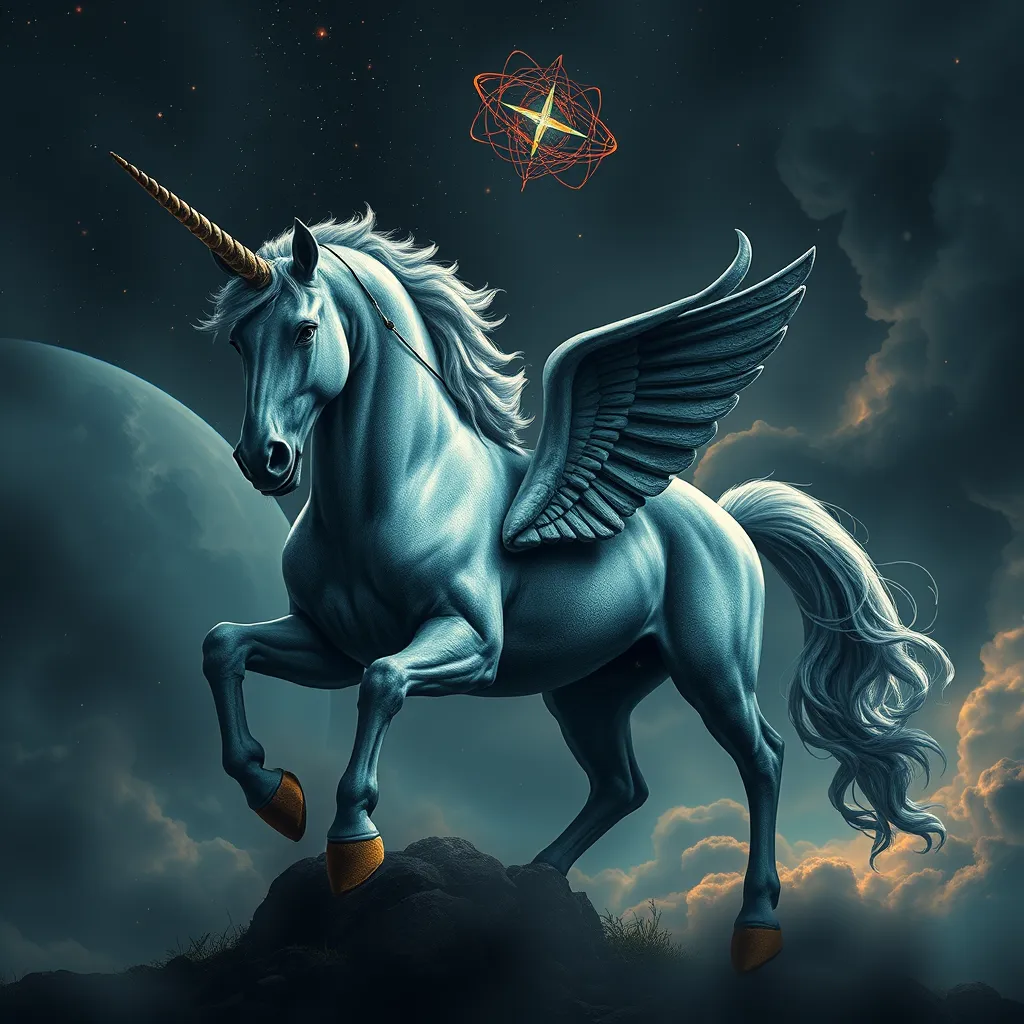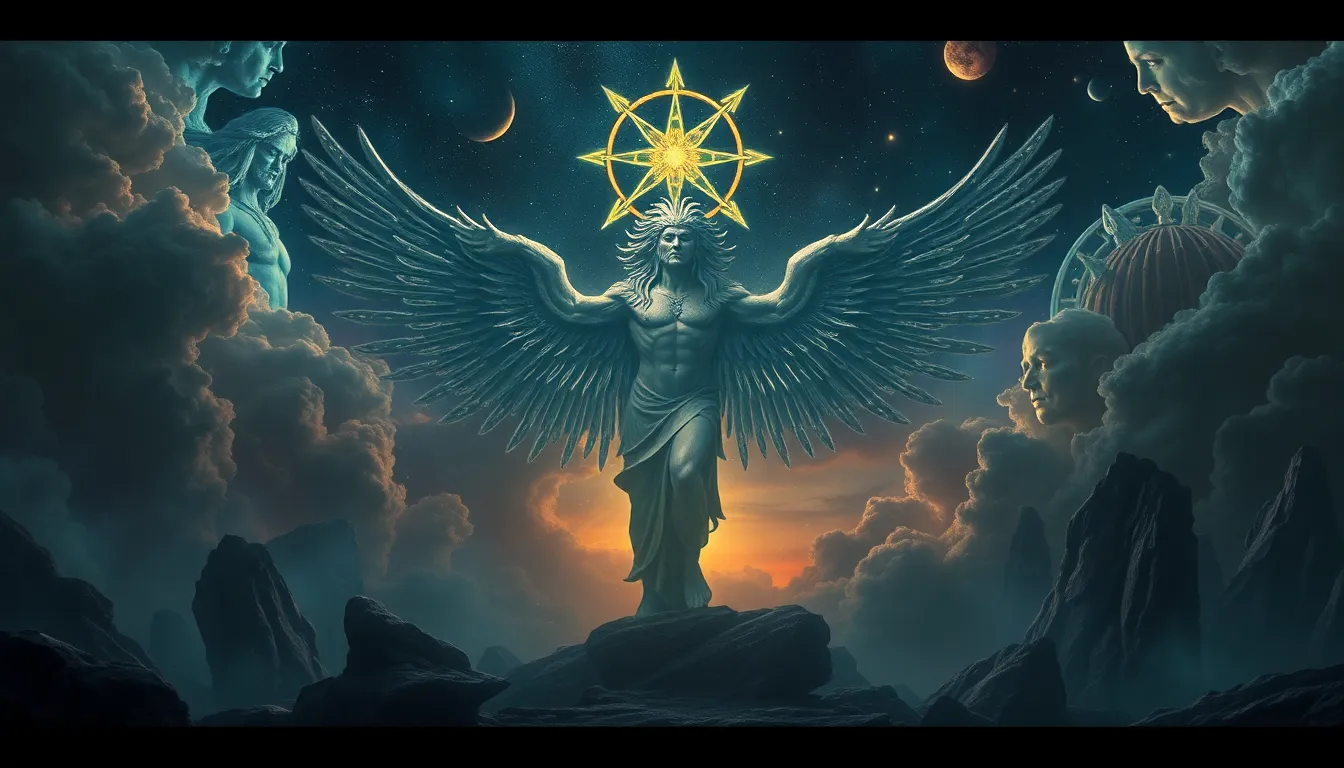Unicorns of the Apocalypse: Exploring the Unicorn in Christian Tradition
I. Introduction
Unicorns have captivated human imagination for centuries, often seen as mythical creatures embodying purity and grace. In folklore, they are typically depicted as horse-like beings with a single spiraled horn protruding from their foreheads. The allure of unicorns extends far beyond mere fantasy; they hold a significant place in Christian tradition, where they symbolize deeper theological truths and spiritual ideals.
This article aims to explore the multifaceted role of unicorns within Christian tradition, examining their historical context, theological symbolism, biblical references, artistic representations, and modern interpretations. By delving into these aspects, we can better understand how this mythical creature has influenced Christian thought and culture throughout the ages.
II. The Historical Context of Unicorns in Christianity
The mythology of unicorns dates back to ancient civilizations, where they were often associated with various attributes and qualities.
A. Origins of unicorn mythology
Unicorns can be traced back to ancient texts and myths, including the Indus Valley Civilization and ancient Mesopotamia. In these cultures, they were often depicted as symbols of strength and purity.
B. Unicorns in early Christian texts and interpretations
As Christianity emerged, the unicorn became integrated into early Christian literature. Interpretations of unicorns varied, with some early Christian writers viewing them as allegorical representations of Christ or the Virgin Mary.
C. Influence of ancient cultures on Christian unicorn symbolism
The ancient Greeks and Romans contributed significantly to the unicorn’s mythology, often confusing it with real animals like the rhinoceros. Such interpretations influenced early Christian art and literature, embedding unicorn symbolism into the fabric of Christian belief.
III. Symbolism of the Unicorn in Christian Theology
In Christian theology, the unicorn is rich in symbolism, often linked to themes of purity, grace, and divine protection.
A. The unicorn as a symbol of purity and grace
The unicorn is frequently depicted as an emblem of purity, often associated with virgins and innocence. Its elusive nature and difficulty to capture symbolize the purity of the soul.
B. Association with Christ and the Virgin Mary
Christian tradition often associates the unicorn with Christ, seen as a sinless being that brings salvation. The Virgin Mary is similarly linked to the unicorn, representing her purity and maternal qualities.
C. The unicorn in the context of salvation and redemption
Unicorns are also viewed as symbols of salvation, embodying the hope of redemption through Christ. Their narrative intertwines with the broader themes of divine grace and mercy within Christian theology.
IV. Unicorns in Biblical References
The unicorn appears in various places within the Bible, often sparking debate regarding its interpretation.
A. Examination of unicorn references in the Bible
In the Book of Job (39:9-10) and Psalm 92:10, the term “unicorn” is mentioned, prompting varied interpretations among scholars.
B. Interpretations of ‘unicorn’ in different translations
Depending on the translation, the term “unicorn” may refer to different creatures, such as the wild ox or a mythical beast. The King James Version is one notable translation that uses “unicorn,” leading to diverse interpretations.
C. The metaphorical significance of unicorns in biblical narratives
In biblical narratives, unicorns often symbolize strength and the divine, highlighting God’s power and the mystical elements of creation.
V. The Unicorn in Medieval Christian Art
During the medieval period, unicorns became prominent in Christian art, reflecting their theological significance.
A. Depictions of unicorns in illuminated manuscripts
Illuminated manuscripts often featured unicorns, intricately designed to convey their symbolic meanings. These artworks emphasized the unicorn’s purity and its connection to Christ.
B. Unicorns in religious iconography and church art
In church art, unicorns were frequently depicted alongside biblical figures, reinforcing their role as symbols of purity and grace. They were common in tapestries and altarpieces, serving as reminders of divine love.
C. Analysis of famous artworks featuring unicorns
Notable artworks, such as the “Unicorn Tapestries,” illustrate the unicorn’s significance in medieval art, showcasing its beauty and spiritual symbolism.
VI. The Unicorn as a Symbol of Apocalypse
In addition to its associations with purity and grace, the unicorn also plays a role in apocalyptic literature.
A. The unicorn’s role in apocalyptic literature
The unicorn can be seen as a harbinger of hope in times of judgment, often interpreted as a sign of divine intervention during apocalyptic events.
B. Connections to the themes of judgment and divine intervention
Unicorn imagery resonates with themes of judgment, purity, and salvation, underscoring the belief in God’s ultimate triumph over evil.
C. Interpretations of unicorn imagery in eschatological contexts
As eschatological symbols, unicorns symbolize the hope of redemption and the promise of eternal life, reinforcing the belief in a new creation post-apocalypse.
VII. Modern Interpretations and Cultural Impact
In contemporary society, the unicorn continues to captivate, merging fantasy with spirituality.
A. The revival of unicorn imagery in contemporary Christianity
Many modern Christian communities have embraced unicorn imagery, using it as a symbol of hope and divine love in their teachings.
B. Unicorns in popular culture and their spiritual implications
Unicorns have permeated popular culture, appearing in literature, films, and merchandise, often as symbols of positivity and magic.
C. The balance between myth and faith in modern Christian thought
In a world where fantasy and reality often intertwine, many Christians navigate the balance between belief in the divine and appreciation for the mythical, allowing unicorns to symbolize both hope and imagination.
VIII. Conclusion
The unicorn holds a significant place in Christian tradition, embodying themes of purity, grace, and salvation. Its historical context, theological implications, and artistic representations contribute to its enduring legacy within the faith. As we reflect on the intersection of fantasy and spirituality, unicorns remind us of the hope and beauty inherent in the divine narrative.
In conclusion, the symbolism of unicorns transcends mere mythology, serving as a bridge between the realms of faith and imagination. The legacy of unicorns continues to inspire and resonate within both religious and cultural contexts, inviting us to explore the depths of spiritual significance in all things.



